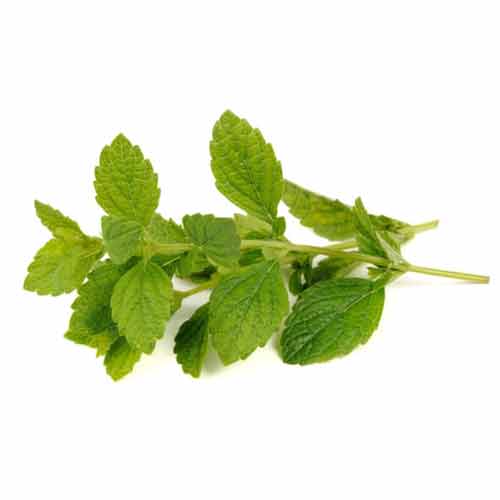Mélisse (feuilles) extrait CO2-to (bio), 10 % huile essentielle, DE-ÖKO-013
Product-No.: 078.011
Matières Premières:
Melissa officinalis – Leaves, dried, from organic farming
Fabrication:
By supercritical fluid extraction with natural carbon dioxide, no solvent residues, no inorganic salts, no heavy metals, no reproducible microorganisms [1]. The extract is standardised with sunflower oil (organic) to a content of 10 % essential oil.
Ingrédients:
voir spécifications
Utilisation:
Balm leaves are used in traditional herbal medicines to treat insomnia, mild mental stress or mild gastrointestinal complaints such as flatulence [2]. In folk medicine, lemon balm is also recommended as a diaphoretic for colds [3].*
Due to its citrusy, fresh aroma, balm leaf extract is well suited for flavouring alcoholic and non-alcoholic beverages, desserts, confectionery or Mediterranean dishes.*
Due to the positive properties of balm leaves, the extract is also suitable for use in food supplements, especially in preparations for the night.*
The extract has a citrus-like, invigorating smell and can therefore be used as a fragrance in cosmetic products and perfumes. Moreover, balm leaf extract has antiviral and antibacterial effects [4].*
Littérature:
[1] P. Manninen, E. Häivälä, S. Sarimo, H. Kallio : Distribution of microbes in supercritical CO2 extraction of sea buckthorn (Hippophae rhamnoides) oils : Zeitschrift für Lebensmitteluntersuchung und -Forschung / Springerverlag (1997) 204: 202-205
[2] Committee on Herbal Medicinal Products (HMPC), European Medicines Agency (EMA) : Community herbal monograph on Melissa officinalis L., folium : EMA/HMPC/196745/2012
[3] F.C. Czygan, D. Frohne, Chr. Höltzel, A. Nagell, P. Pachaöy, H.J. Pfänder, M. Wichtl, g. Willhuhn, W. Buff : Teedrogen und Phytopharmaka, 3. Auflage. : Stuttgart: Wissenschaftliche Verlagsgesellschaft GmbH 1997
[4] Wolfgang Blascheck u.a. (Hrsg.) : HagerROM 2017, Hagers Enzyklopädie der Arzneistoffe und Drogen : Suttgart: Wissenschaftliche Verlagsgesellschaft Stuttgart, 2017
